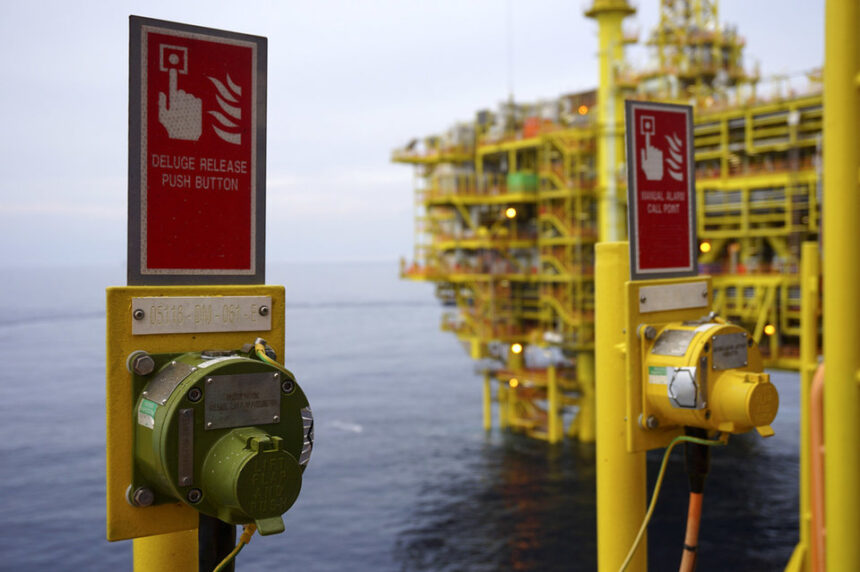Oil refineries are among the most hazardous industrial environments, with the potential for fire accidents posing a significant risk to workers and facilities alike. Due to the highly flammable materials processed in these refineries, any error or malfunction can lead to catastrophic fires. However, advancements in technology are playing a crucial role in mitigating these risks and enhancing fire prevention strategies.
As technology continues to evolve, refineries are adopting innovative solutions to improve safety standards and minimize the risk of fire accidents. For those injured in such incidents, seeking the assistance of a knowledgeable workplace accident attorney is essential to protect their rights and obtain the compensation they deserve. Here’s how modern technology is reducing fire risks in oil refineries.
Automated Fire Detection and Suppression Systems
One of the most significant advancements in fire prevention is the implementation of automated fire detection and suppression systems. These systems use sensors to detect early signs of a fire, such as temperature spikes, gas leaks, or smoke. Once a potential fire is detected, the system automatically deploys suppression methods, such as foam or water-based extinguishing agents, to contain and extinguish the flames before they spread.
Automated systems are invaluable because they respond faster than human intervention, reducing the time it takes to address a fire. This technology not only minimizes damage to equipment but also helps protect workers from being exposed to dangerous conditions. By preventing fires from escalating, automated detection and suppression systems are revolutionizing fire safety in oil refineries.
Advanced Gas Leak Detection
A major cause of fires in oil refineries is gas leaks, which can ignite if not identified and addressed promptly. New technologies have been developed to detect gas leaks more accurately and quickly. Infrared cameras, ultrasonic detectors, and laser-based gas detection systems can now identify leaks even in hard-to-reach areas. These systems monitor the air for combustible gases and trigger alarms when dangerous levels are detected.
By incorporating real-time monitoring systems, refineries can detect leaks early, preventing gas build-up and reducing the risk of fire. Additionally, workers can be evacuated before an incident occurs, improving overall safety. This technology is crucial in environments where even a small leak can have devastating consequences.
Predictive Maintenance with AI and IoT
The integration of artificial intelligence (AI) and the Internet of Things (IoT) has revolutionized predictive maintenance in oil refineries. Sensors installed on critical equipment continuously monitor the health and performance of machines, detecting early signs of wear, overheating, or malfunction. By analyzing data in real-time, AI algorithms can predict when equipment is likely to fail and schedule maintenance before a breakdown occurs.
Predictive maintenance reduces the risk of equipment failure that could lead to fires, ensuring that all machinery is operating safely and efficiently. This proactive approach not only improves safety but also reduces downtime and costly repairs. In the long run, predictive maintenance powered by AI and IoT helps refineries maintain safer working environments.
Enhanced Fire-Resistant Materials
Enhanced fire-resistant materials are playing a crucial role in improving fire prevention strategies in oil refineries. These advanced materials offer significant protection for critical infrastructure, helping to reduce the risk of fire-related disasters. Here are the key benefits of using fire-resistant materials in refineries:
- High-Temperature Endurance: These materials can withstand extreme heat, preventing fires from spreading to other areas.
- Protection of Critical Infrastructure: Fire-resistant coatings and insulation protect pipelines, storage tanks, and equipment from heat damage.
- Containment of Fires: The materials help prevent large-scale explosions and structural failures by containing fires in specific areas.
- Increased Safety: Incorporating fire-resistant materials in refinery design significantly reduces the overall risk of fire-related incidents.
- Longevity of Equipment: These materials help prolong the lifespan of critical components by protecting them from fire damage.
Real-Time Monitoring and Emergency Response Systems
Incorporating real-time monitoring systems into oil refinery operations is an essential part of modern fire prevention strategies. These systems utilize data from various sensors placed throughout the refinery to monitor environmental conditions, equipment performance, and fire risk factors in real time. If the system detects any abnormal conditions, it immediately alerts workers and emergency responders.
Advanced monitoring systems also improve coordination during emergency response efforts. When a fire is detected, these systems can automatically trigger alarms, shut down equipment, and guide workers to safe evacuation routes. By providing real-time information to first responders, these systems help ensure faster, more efficient responses to fire incidents.
Improved Worker Training with Virtual Reality (VR)
Technology is not only improving equipment and detection systems but also enhancing the way workers are trained to prevent and respond to fires. Virtual reality (VR) training programs are being used in oil refineries to simulate fire scenarios in a safe, controlled environment. Workers can experience realistic fire situations and learn how to respond effectively without being exposed to actual danger.
VR training is particularly useful for teaching workers how to operate emergency equipment, follow evacuation procedures, and make quick decisions in high-stress situations. This immersive training method improves worker preparedness and helps reduce human error during real emergencies, ultimately lowering the risk of fires.
Role of Drones in Fire Risk Assessment
Drones are becoming an increasingly valuable tool for assessing fire risk in oil refineries. Equipped with thermal imaging cameras and gas detection sensors, drones can inspect high-risk areas that are difficult for workers to access. By flying over storage tanks, pipelines, and processing units, drones can identify hotspots, gas leaks, or equipment malfunctions that may pose a fire risk.
Using drones for fire risk assessments reduces the need for workers to enter potentially hazardous areas, improving safety. Additionally, drones provide real-time data that allows for quicker, more informed decision-making when it comes to preventing fires and addressing safety concerns before they escalate.
Utilizing AI in Emergency Response Planning
Artificial intelligence (AI) is playing a growing role in enhancing emergency response planning for oil refineries. AI systems can analyze past fire incidents, current operational conditions, and environmental data to predict potential fire hazards and simulate various emergency scenarios. This information allows refinery operators to develop more effective response plans and improve preparedness.
AI-driven systems can also help optimize evacuation procedures by modeling different emergency routes based on the refinery’s layout and current worker locations. This ensures that, in the event of a fire, workers can evacuate safely and efficiently. With AI’s predictive capabilities, refineries can stay one step ahead of potential fires and respond with greater precision.






